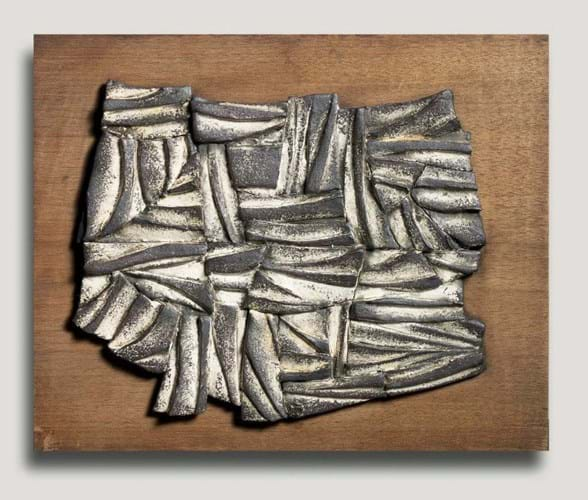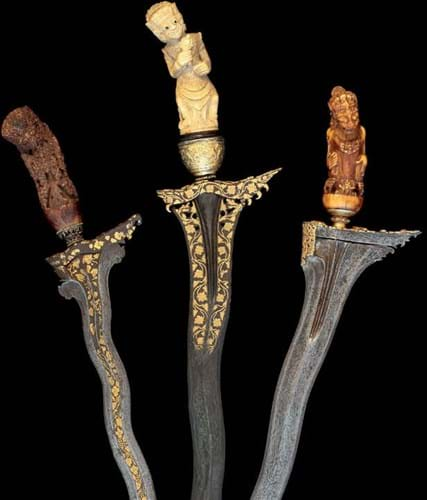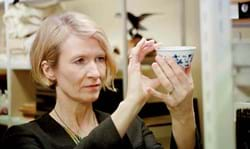
Lyon & Turnbull, Edinburgh/London
This extraordinary mammoth ivory okimono from the Meiji period depicts four skeletons in an otherwise typical victorian scene of a photographer and three sitters. Measuring 11in (27cm) wide it is signed Shutaro and sealed within an inlaid rectangular plaque. It comes for sale at Lyon & Turnbull on November 7 with an estimate of £5000-8000 from an English private collection.
A similar carving of skeletons playing an animated game of dominos, also signed Shutaro, was sold by Christie’s South Kensington in 2014.
Bonhams Bond Street, London
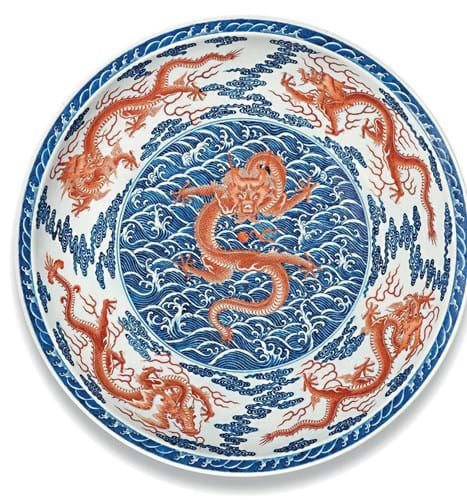
Bonhams Bond Street, London: this large 19in (48cm) underglaze blue and iron-red enamel ’nine dragon’ dish carries a Qianlong seal mark and is of the period.
This large 19in (48cm) underglaze blue and iron-red enamel ’nine dragon’ dish carries a Qianlong seal mark and is of the period. The British businessman and Hong Kong politician Sir David Newbigging purchased it c.1960 during a business trip to China.
It came from Hong Kong to the UK in 1984 and has been consigned for sale on November 8 from a European private collection with an estimate of £400,000-600,000.
Gregg Baker, London
In 1948 the Kyoto potter Osamu Suzuki (1926-2001) co-founded the influential avant-garde ceramic group SÕdeisha (clay association), a name which refers to a Chinese term meaning ‘glazing flaw’.
The aim of this group of potters was to install a more artistic and expressive dimension in pottery – creations often referred to as obuje-yaki (ceramic art object). In 2013, 12 years after his death, the National Museum of Modern Art in Kyoto held a retrospective titled Suzuki Osamu: Image in Clay. This 13in (33cm) wide ceramic sculpture mounted on a wood panel dates from c.1960.
Han Collection, London
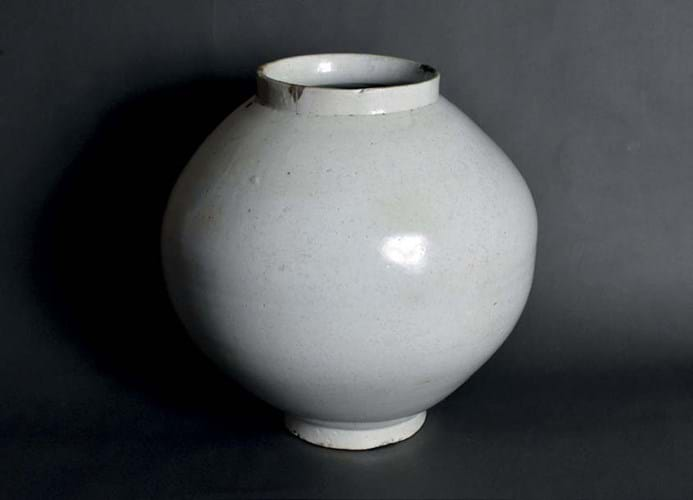
Han Collection, London: large porcelain moon jar based on the Korean vessels of the Joseon period (1392- 1910) made to traditional methods by the contemporary potter Oh Man-Chul.
This large porcelain moon jar – based on the Korean vessels of the Joseon period (1392- 1910) – were made to traditional methods by the contemporary potter Oh Man-Chul. Two hemispherical halves of white porcelain are fired, then fused together with any slight asymmetry viewed as nature taking its course rather than deformity. It measures 21in (52cm) high.
Robert Brandt, London
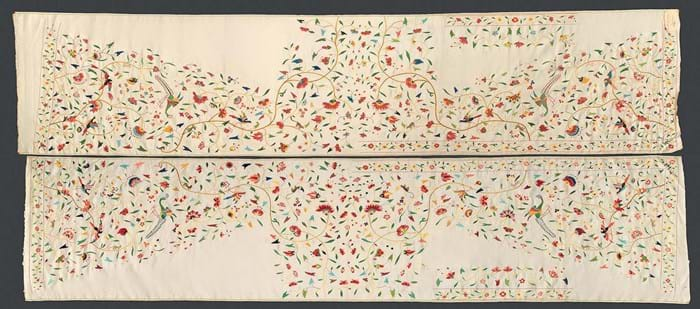
Robert Brandt, London: un-cut Chinese export embroidered white silk Japon (Banyan) robe probably made for the Dutch-market c.1760.
This un-cut Chinese export embroidered white silk Japon (Banyan) robe was probably made for the Dutch-market c.1760. The finely worked design, populated by six pairs of brightly coloured peacock and pen-hens and 16 tree shrews, is borrowed from printed and painted cotton palampores made in the 18th century on the Coromandel Coast. Acquired in Germany, and by repute from a Friesland collection in the Netherlands, it is thought to be the only bespoke Chinese Banyan yet seen.
Kamal Bakhshi Modern Asian Art, London

Kamal Bakhshi Modern Asian Art, London: mineral pigment on washi paper screen titled simply Iris by contemporary Japanese artist Kazuko Shiihashi.
The contemporary Japanese artist Kazuko Shiihashi is a painter of Nihonga – a term coined in the Meiji period to describe works of art completed in accordance with traditional Japanese artistic conventions, techniques and materials. Western-style painting were known as Yõga.
This mineral pigment on washi paper screen is titled simply Iris.
Bachman Eckenstein, Basel
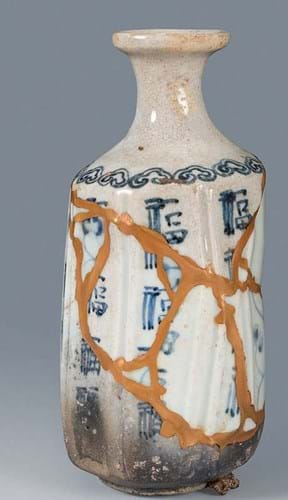
Bachman Eckenstein, Basel: 17th century Arita sake flask (tokkuri) restored using the yobitsugi (‘borrowed patches’) technique.
This 7in (19cm) 17th century Arita sake flask (tokkuri) was restored using the yobitsugi (‘borrowed patches’) technique. Sherds from another vessel that closely match the original appearance of the bottle effected the repair. It formed part of the 2008 exhibition Flickwerk: The Aesthetics of Mended Japanese Ceramics at the Herbert F Johnson Museum of Art in Ithaca, New York.
William Martindale, London
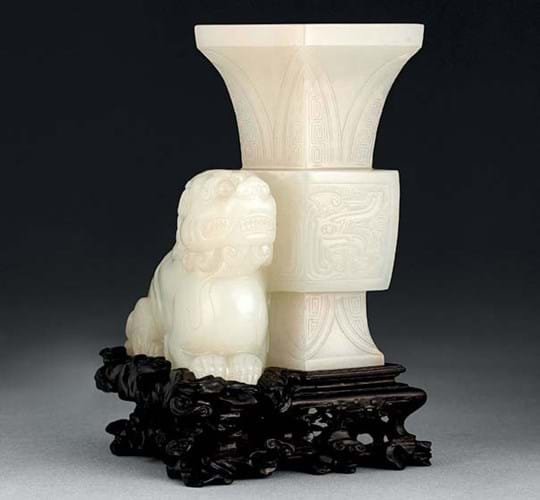
William Martindale, London: this Qianlong period white handling jade is carved as a seated lion dog positioned next to an archaic gu-form vase.
This Qianlong period white handling jade is carved as a seated lion dog positioned next to an archaic gu-form vase standing 4¾in (12cm) high. It comes with a complementary zitan stand carved with lingzhi fungus that reaches up to surround the feet of the dog and levels in a flat support under the vase.
Acquired in Hong Kong in 1973, it has since been in an American private collection.
Simon Pilling, London

Simon Pilling, London: Japanese Nemuri Todai – a ‘sleeping lamp stand’ used to reflect light for reading and writing after dark – dates from the 14th century Nanbokucho period.
This Japanese Nemuri Todai – a ‘sleeping lamp stand’ used to reflect light for reading and writing after dark – dates from the 14th century Nanbokucho period. The lacquer and metal stand, 2ft 7in (79cm) high, supports a circular painted wooden panel, 11in (28cm) across, that shows a scene of three children at their studies, one of whom has drifted off to sleep. The Tokyo National Museum holds a comparable 13th-14th century example designated as ‘important cultural property’, with this example once part of the Matsunaga Yasuzaemon (1875-1971) collection.
Hanga Ten, London
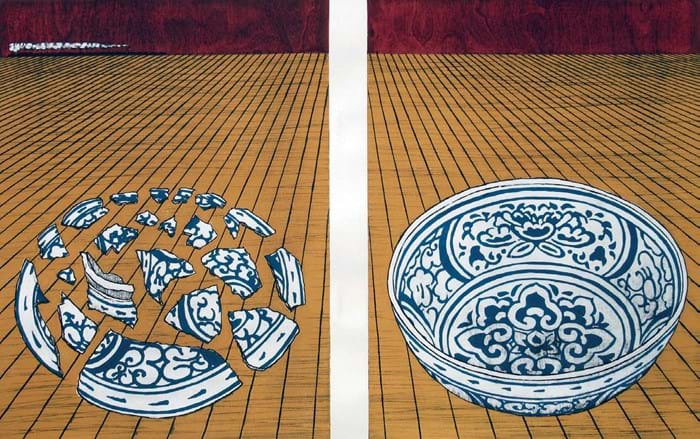
Hanga Ten, London: Shiomi Nana’s A Room of One’s Own – Still Life, published in an edition of 30 in 2017.
Shiomi Nana’s A Room of One’s Own – Still Life, 2ft x 3ft 2in (60 x 95cm), was published in an edition of 30 in 2017. The artist, born in Osaka in 1956, began printmaking at the age of 20, choosing the traditional Japanese woodcut technique, using the baren to spread water-based ink and allowing it to soak into Japanese paper.
Joost van den Ber
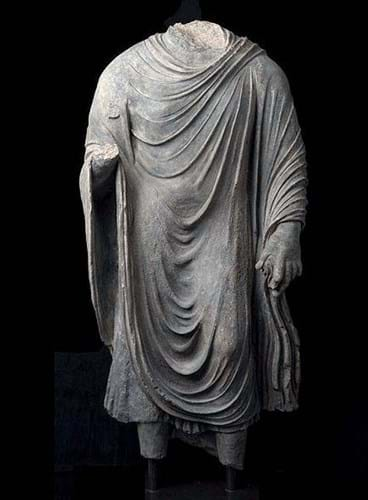
Joost van den Bergh, London: monumental 3ft 9in (1.14m) schist torso from the 3rd-4th centuries, the ancient region of Gandhara.
The ancient region of Gandhara, located at the centre of the Silk Road, was particularly influenced by Hellenistic culture. The legacy left by the travels and military campaign of Alexander the Great was integrated into local traditions, out of which was born the Gandharan School of art, a unique mix of East and West. This monumental 3ft 9in (1.14m) schist torso from the 3rd-4th centuries is from that unique period of Asian and Buddhist history.
Bruun Rasmussen, Copenhagen

Bruun Rasmussen, Copenhagen: porcelain flask with two pairs of dragon-shaped loop handles, decorated in underglaze blue, with a three claws dragon, ‘cloud collars’ with birds and foliage and ruyi-shaped panels within flowers.
A rare and large 13in (33cm) porcelain flask with two pairs of dragon-shaped loop handles, decorated in underglaze blue, with a three claws dragon, ‘cloud collars’ with birds and foliage and ruyi-shaped panels within flowers. The form is unique to the Yuan dynasty (1280-1368), with a similar flask in the Victoria and Albert Museum deemed one of only seven of this shape known to exist.
Bought by the owner in a Danish antiques shop c.1980, it carries an estimate of DKr1m-1.5m (€135,000- 200,000) at Bruun Rasmussen’s sale on November 27.
Bubbar Prahlad, London
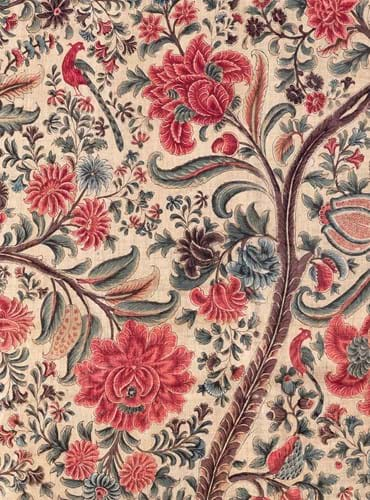
Bubbar Prahlad, London: tree-of-Life palampore (bed cover or hanging) from the northern part of the Coromandel Coast which was made for the export market c.1760.
Although printed and painted cottons were being made in several centres in central and south-east India, those from the northern part of the Coromandel Coast have always been acknowledged as the finest. This 10ft 5in x 6ft 11in (3.18 x 2.12m) Tree-of-Life palampore (bed cover or hanging) was made for the export market c.1760.
Grace Tsumugi Fine Art, London
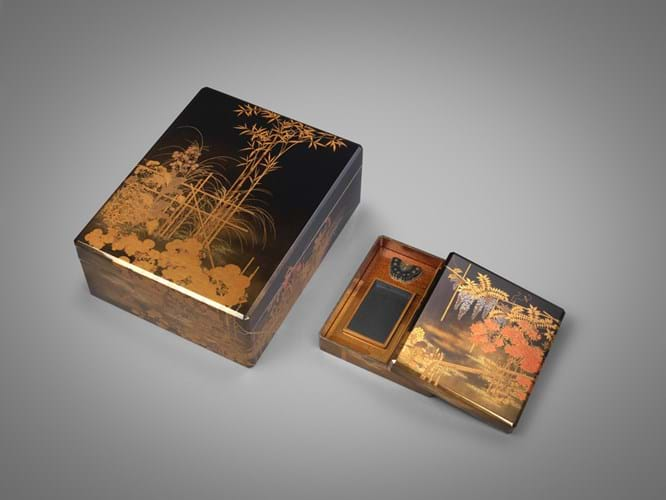
Grace Tsumugi Fine Art, London: A Taisho era (1912-26) lacquer writing box and document box c.1910-15 by Koda Shûetsu.
A matching Taisho era (1912-26) lacquer writing box and document box c.1910-15 by Koda Shûetsu (1881-1933), decorated with Japanese garden views and to the interiors with birds by waves. Koda Shûetsu was born Koda Kaichiro but adopted the name Shûetsu out of admiration and respect for Hon’ami Kôetsu (1558-1637), one of the instigators of an art movement and style that later became known as Rinpa.
October Gallery, London
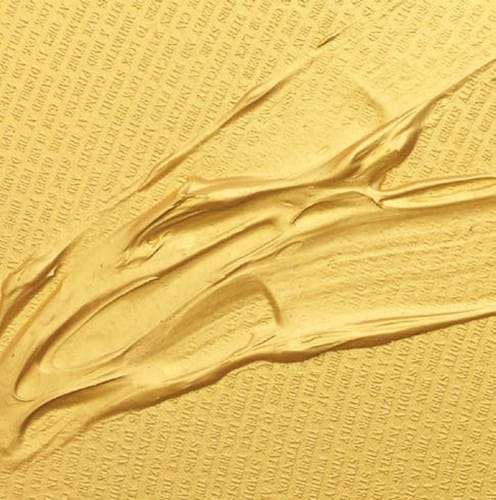
The artist Tian Wei has spent many years travelling back and forth between America and China – and his art reflects the experience of both Eastern and Western spheres. Close inspection of the acrylic on canvas Gaze reveals a patterned background made of swirling quotations in minute script from classical Chinese text. The lines, in fact, spell out simple English nouns and adjectives such as Sexy, Light and Soul.
Christie’s, London

This large Yongzheng (1725-35) mark and period moon flask or bianhu promises to be the highlight of Christie’s November 6 sale of Fine Chinese Ceramics and Works of Art.
Consigned from ‘a distinguished European private collection’ with an estimate of £1.2m-1.5m, the vendor’s grandfather acquired it in Asia between 1920-43.
Christie’s consultant Rosemary Scott has penned a long catalogue note praising its exceptional size at 21in (53cm) high, its distinctive form and the early 15th century Ming style decoration that reflects the emperor’s keen antiquarianism. The famous director of the imperial kilns, Tang Ying (1682-1756), who first came to Jingdezhen as resident assistant in 1728 and stayed until well into the Qianlong reign, was especially celebrated for his success in imitating Yongle and Xuande wares.
Sydney L Moss, London
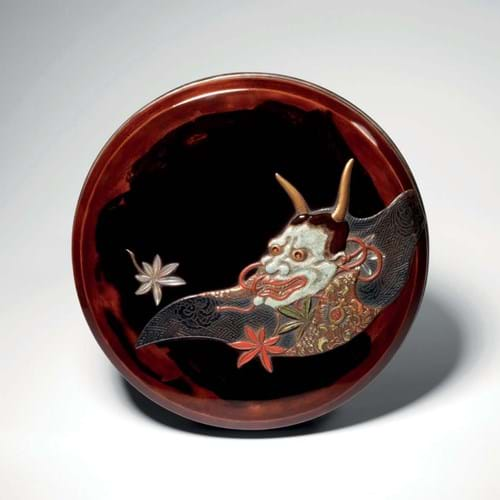
Sydney L Moss, London: lacquer kagamibako (mirror box) by the celebrated Edo period craftsman Ogawa Haritsu, better known as Ritsuo (1663- 1747), inlaid with a ceramic mask of the female demon Hannya.
This 6½in (16cm) lacquer kagamibako (mirror box) by the celebrated Edo period craftsman Ogawa Haritsu, better known as Ritsuo (1663- 1747), is inlaid with a ceramic mask of the female demon Hannya. Once human, she becomes the vengeful ghost of a jealous woman, who has returned to haunt those who scorned her in life. Ritsuo depicts her as a noh theatre mask, with bull-like horns, a wicked smile and manic bulging eyes, escaping from its cloth wrappings.
Roseberys

Roseberys: pair of Yongzheng mark and period lemon-yellow glazed bowls with underglaze blue six-character marks within a double ring.
A pair of Yongzheng mark and period lemon-yellow glazed bowls with underglaze blue six-character marks within a double ring, 4½in (11cm) diameter. Lemon-yellow glazed vessels were conceived during Emperor Yongzheng’s reign, achieved when the antimoniate of iron was combined with tin oxide. This pair, from a titled gentleman in the south of England, carry an estimate of £3000-5000 at Roseberys’ auction scheduled for November 12.
Singapore Art Garret Gallery
Born in Sumatra, Indra Dodi (b.1980) received his training in art at the Indonesian Institute of the Arts, Yogyakarta. Happy Day, an acrylic on canvas from 2015, measures (1.5 x 1.6m).
Robert Hales
A group of three highly decorated Indonesian kris with parmor (layered metal) blades. From left to right: a 14th- 15th century Majapahit kris with a stylised figurative wood hilt and a mendak (cup) in gold studded with rubies. The blade is encrusted with gold vine leaves and tendrils.
A Balinese kris with a stag horn hilt is carved as a guardian figure set in an ebony and chased gold mendak. The black and while blade is encrusted on both sides with gold leaves and tendrils. The blade is 17th century, the hilt is 19th.
A 16th or 17th century Javanese kris with an ivory hilt carved with a Rakshasa figure and a gold mendak (cup). The top of the straight blade is encrusted with gold animals and scrolls.
Judging panel

Anne Crane of ATG.
ATG’s Anne Crane is one of the panel given the task of deciding who should win an AAL award. The Asian Art in London awards are a longstanding tradition of the event.
Judged by a panel of curators from the Ashmolean and Fitzwilliam museums and representatives from AAL’s sponsors, including Antiques Trade Gazette, the awards this year will be presented at the event’s opening party on November 1.
An innovation this year was online voting to create a preliminary shortlist.

